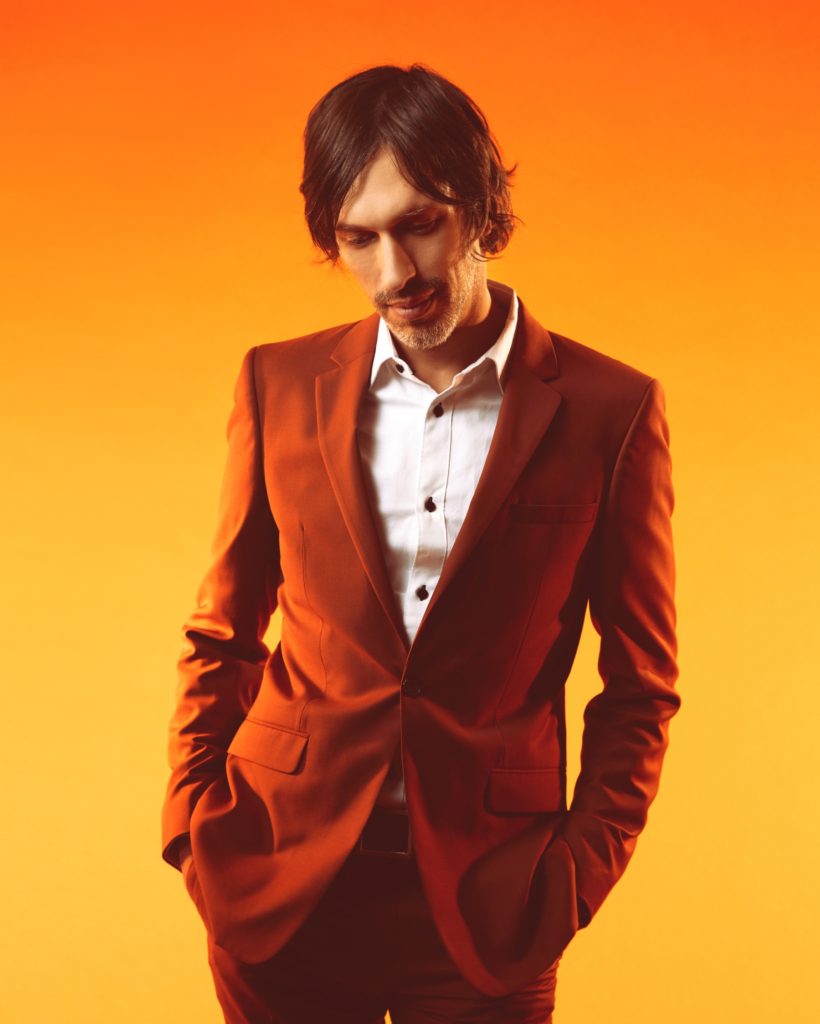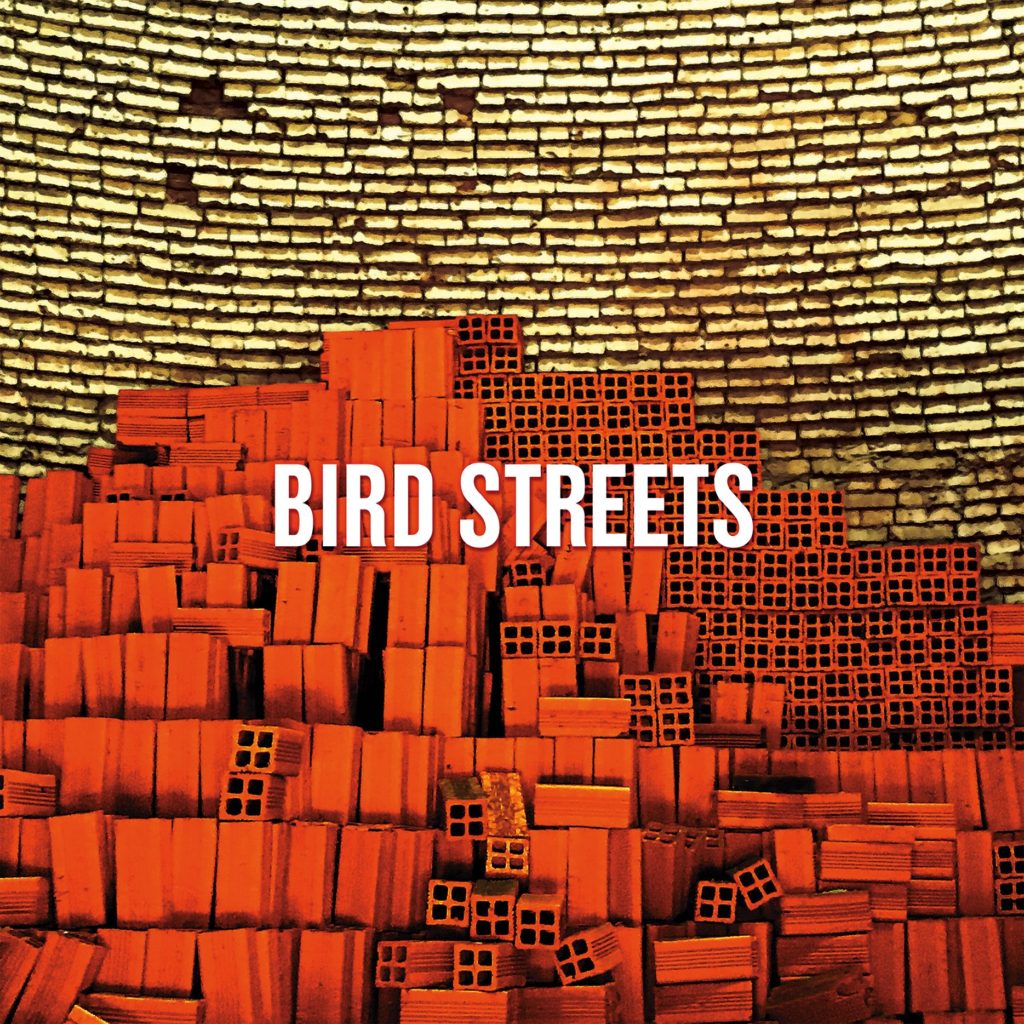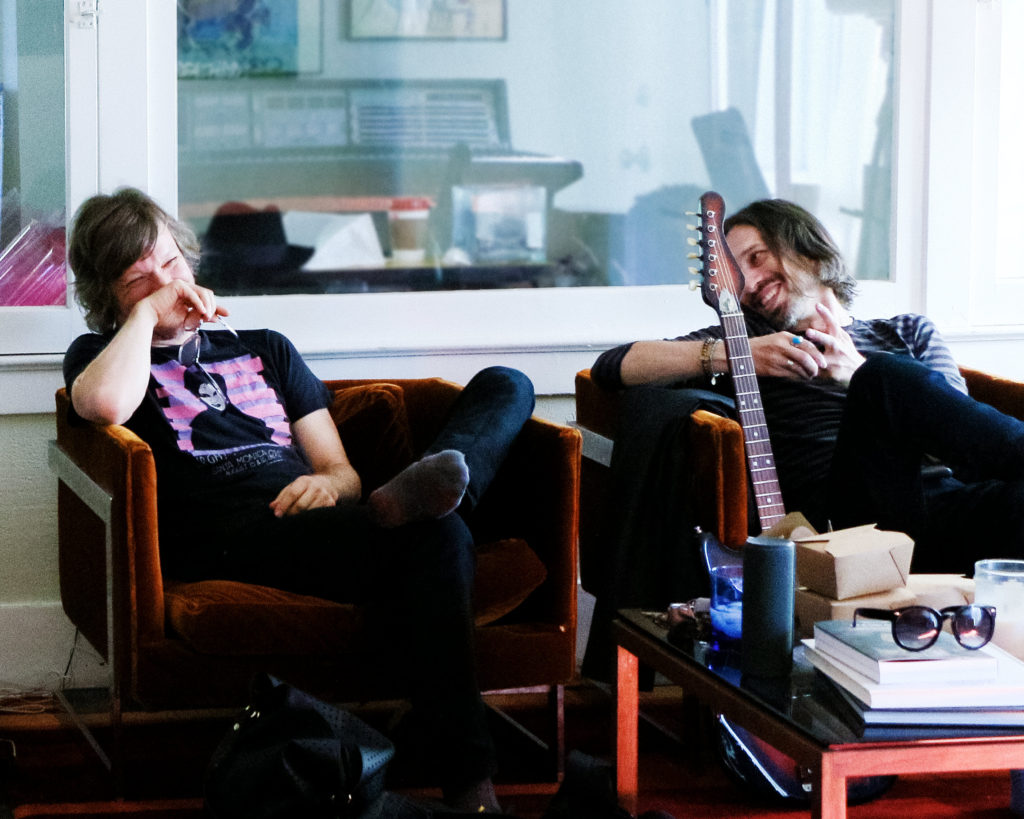Flying The Bird: A Conversation with John Brodeur of Bird Streets
Bird Streets brainchild John Brodeur has been a solo artist at the crowded power pop table for years. Despite delivering some solid efforts in “Get Through” in 2009, and the follow-up, “Little Hopes” in 2013, full-blown, stand-alone success has been an elusive main course for the multi-talented New York-based singer/songwriter.
Time has its way of chipping away at one’s artistic soul, however, and by 2014, the table scraps he’d survived and depended on for his musical sustenance simply weren’t enough. Brodeur’s inner self needed to be fed.
“I kind of hit a wall after my last solo album,” Brodeur said in an interview. “There was no promotion behind it, and it didn’t make much of a dent. Things weren’t growing. Then a few setbacks forced me to cancel a bunch of tour dates, and it felt like the universe was trying to tell me something. It felt like a good time to take a step back and reassess how I wanted to present myself. While I’m decent at the indie-troubadour thing, I’d gotten tired of the trappings that go with the term “singer/songwriter.” So Bird Streets is the sound of me pressing the proverbial reset button. It feels more natural to work under a band name with this kind of music. Plus it looks cool on a T-shirt.”

For his next project, Brodeur aimed high and enlisted the services of Jason Falkner (Beck, Air, Paul McCartney, Jellyfish, etc.) as co-writer, co-player and producer for Bird Streets, and also brought in sonic canvas strokes from guest musicians such as Luther Russell (Those Pretty Wrongs) and Miranda Lee Richards. The resultant self-titled debut album released Aug. 10 features some of Brodeur’s finest work to date. Whether or not it’s his ticket to the big table has yet to be determined, but the process has reshaped Brodeur and provided a readily apparent spring in his step.
Brodeur took some time out of his schedule to speak with ListenIowa on the creative process that became “Bird Streets,” his collaboration with Falkner, and the burden of being overly prepared.
You’ve worked as a touring and studio musician for years, so why release this as Bird Streets instead of under your own banner?
Jason Falkner’s involvement was also a big factor in the change. I thought this was another John Brodeur record for our first few sessions, but the more we worked together, the more I knew this was something very different and new. It felt like a clean break from my past work. And there’s so much Falkner on this album that it would have felt disingenuous to put it under the same banner as my one-man-band albums. Bird Streets, at least on this record, is very much a two-man band — or two one — man bands arguing over who gets to play the drums.
Where does the name Bird Streets come from anyway?
There’s a really posh neighborhood in the Hollywood Hills called The Bird Streets. It’s where all the huge movie stars live. Named as such for obvious reasons. I first heard about it when Jason and I were recording our first song (“Direction”) in 2014, and it reminded me of my old neighborhood in Albany, New York, where all the streets were named after…. you guessed it. It’s a fairly poor and not-at-all flashy city, and I was immediately struck by its juxtaposition with this magical land of $25 million L.A. mansions. A lot of the lyrics on this album were inspired by people or situations from my time in Albany, so the name just seemed right.
Were things stagnant in the New York music scene when you reached out for some help from Jason Falkner?
Not the scene, per se, just my own career. I suppose I was a little bit burnt out on the constant grind — just once, I would like to play a show and not have five other friends be gigging elsewhere at the same exact time — but that grind also why New York is so great.
But the Falkner thing happened organically. He and I had gotten to be friends over a number of years, but always had 3,000 miles keeping us from getting in a room and jamming. Eventually I just said, “I’ll come to you, man.”
What was it about Jason that made you think, “This is the guy I have to work with next.”
It happened very naturally. Granted I’ve been a fan of his since before I was in bands — Bellybutton was in my Walkman for most of 1990 and ‘91, and I’ve followed him right along — but it wasn’t a targeted decision. Initially the thought was, “This dude and I get along well. We should try to make something.” And that first session turned out to be one of the most comfortable and productive collaborative situations I’ve experienced. So I went back for more.
The album was recorded between 2014-2016, which is quite a gap from its own actual release date in August. Sometimes artists can look at their work with “different eyes” as time goes on. How has Bird Streets held up over the course of time for you?
I’ve been thinking a lot about the benefit of hindsight with this release. Seeing the numbers does make it seem like a long period of time, but time goes by faster than it used to, don’t it? We finished recording this thing in November of 2016, and I still totally love listening to it. That’s huge for me — every other one of my albums has at least one moment that makes me want to tear out my hair. Sometimes entire songs. But this one has legs, at least for me.
Also, this is the first album of new material I’ve released in a very long time, at least from my perspective. My last three records all felt like rehashes in some way. One was stuck in limbo for five years, the next was essentially a reissue project, the last was compiled from bits of different projects over a long period. I haven’t had as much of a chance to get sick of this one yet! But I don’t think that’s going to happen.
Speaking of the songs themselves, the album is laced with lyrics of angst and/or introspection, yet there is a melodic commonality to each. How important is it to you to have a melodic base to your songs?
Oh, melody is paramount. I have definitely developed as a lyricist over the years, and learned to focus a lot of energy into that part of the songwriting process, but they’re all just words if there’s not a hook to hang them on. As far as commonality goes, I suppose like any songwriter who’s been at it for a good long while I’ve developed some “signature moves” or whatever, which comes from knowing myself and recognizing my skills as a writer and performer. Really I just try to write the kind of songs I would want to hear.
“Betting On The Sun” has an interesting “tighter than Steely Dan” lyric. Talk about that lyric and song.
I often hear musicians talk about having a magic moment in the studio when they realize they’ve done something special. “Betting” was that one for us. I had part of the first verse and about three-quarters of the chorus written when I brought the idea to Jason, and in about an hour we had the skeleton of this terrific tune. By the end of the day we were high-fiving each other over how great it was. I don’t want to speak for Jason and say it felt effortless, but it definitely seemed like we were riding a wave with that one. The lyric references the “tightness” of the band Steely Dan, using that as a comparison to a close friendship. I liked to imagine Donald Fagen and the late Walter Becker as these inseparable best buddies, sipping coffee together every morning at their regular table in a diner on the Upper East Side, making withering remarks about the waitstaff. Maybe that’s more from watching Nick Kroll and John Mulaney in their “Oh, Hello” characters.
“Thanks for the Calling” and “Pretty Bones” are standouts despite coming from different sides of the block in their feel and sentiment.
Thanks for saying that. They’re both true stories, in different ways. “Thanks For Calling” is a song I had around for almost 10 years before we made “Bird Streets.” It’s lyrically as straightforward as it gets — I fancied a young lady, but she fancied someone else. After I’d made numerous awkward attempts at courting her, she called me up to let me know that she and the other guy had become “kind of a thing,” which was a very proper and honorable thing to do. But of course, I was like, “eff that” and wrote a song about it. It didn’t feel album-worthy to me for a long time, but Jason really dug it, and he convinced me to put it on the album. I think he was right to do so.
“Pretty Bones” is the “spooky” acoustic number on side two. It was started as a kind of fugitive story, but I only had a few lines of lyrics — just a small section of the first verse, plus the chorus — and no idea where to go with them. The night before I was supposed to cut the vocal, I got locked out of my friend’s apartment. So I ended up walking up and down Hollywood Boulevard for about three hours, trying to figure out what to write. And that became the song.
On a scale of 1-10, how much of a stickler to detail were you on the album?
If by “stickler to detail” you mean wanting to make the best possible album, then 10. Make that 12. Seriously though, we didn’t really do any pre-production. We worked quickly but with no set plan, just going by reflex. We wanted to maintain the same feeling of spontaneity throughout the sessions that we had making our first song together (“Direction”). Most of the songs were fleshed out in the studio from ideas and song fragments I had collected. We arranged on the fly and worked out the parts as they were being recorded. We tracked some things simultaneously to create a bit of push and pull. The human element. Lyrics were usually completed at the very last minute, so there wasn’t a lot of room in the process to get too hung up on any one thing. And because I so trusted Jason’s instincts, I was able to let go a bit and let it take its own shape. That’s not to say there weren’t entire sections of songs that were rewritten after we thought we were finished with them — because of course there were.
I was a thousand times more detail-oriented when I started out. There were meticulous arrangement and production notes made for my first several albums. Even when I recorded with bands, I had the final say on everything. Over time I learned to enjoy the process more, and realized that it won’t always come out sounding like I expected, but that doesn’t matter as long as the vibe is right. “Bird Streets” is the first time I’ve done an entire record in collaboration with another writer/performer, and it was absolutely crucial to the project’s success that I not come in with too many preconceptions about how it should sound.
The cover art is a pile of bricks. Interesting choice.
We had an entire package design worked up with different cover art, which was perfectly fine, but I think I secretly wanted to do something else. The night before we were planning to submit the artwork to the manufacturer, I saw this photo in my friend Andy’s photo feed and said, “That’s it.” It’s a brick kiln in the Mekong Delta in Vietnam. Something about the photo reminded me of the Hollywood Hills, and I imagined “Bird Streets” written across the top.
Now that the album is finally a wrap, what’s next for you? Any more collaborations with Jason or others in store?
Despite my having been around awhile, I’ve also not been around in a while. So in almost every way Bird Streets is a brand new project, and the release date is Day One. Right now we’re trying to push a single (“Betting On The Sun”), add some tour dates to the schedule, make some more videos — anything to will get more people to hear the music. But of course I’m excited to get onto album number two! Jason and I have talked off-the-cuff about working more together, but that’s about it so far.
Any touring plans?
I’m heading out for some east and west coast dates with the Bird Streets traveling band this fall. Obviously Jason has other commitments (that Beck gig is pretty sweet!) but he’s said he’ll join us when he can.
For More Information on Bird Streets, visit:
www.birdstreets.com
www.facebook.com/birdstreetsmusic
www.twitter.com/BirdStreets


